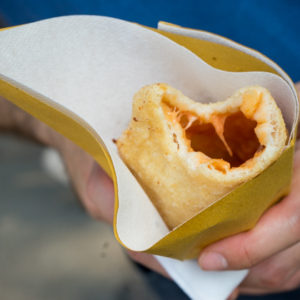
Fontina cheese
We are finally nearing the end of winter. The bird have returned, the sun is shining and the crocuses have sprung from the soil. Ski season is still here though and with that the bounty of the mountains in the winter….cheese, glorious cheese. In my mind, skiing is intertwined with melted cheese. Whether this is the Swiss fondue or raclette (melted cheese with boiled potatoes, dried meat and pickles), the French tartiflette (potatoes, cheese, bacon and onion) or Italian polenta concia (polenta and melted cheese) or pizzoccheri (buckwheat pasta with cheese and potatoes), the unifying ingredient is cheese. Today I am sharing pizzoccheri, a one pot wonder. I can imagine how it was born one winter day with a sack of buckwheat flour, few potatoes and a Savoy cabbage in the larder and a hunk of cheese. As they say, necessity is the mother of invention.

My other favourite from Valtellina- Sforzato di Valtellina (a red wine made with Nebbiolo grapes with the same method as Amarone wine)
From the town of Teglio in the Valtellina district in Lombardia which borders Switzerland, comes these buckwheat tagliatelle pasta which are cooked with potatoes and Savoy cabbage. The whole lot is then mixed with cheese and garlic sage butter and served as one oozing, delicious mess. In the summer, Savoy cabbage is replaced with chard. The earthiness of the buckwheat and the slight waxiness of the potatoes, both absorbing the velvety cheese and the butter infused with garlic and sage makes for one very welcome winter meal.
Pizzoccheri (buckwheat tagliatelle with potatoes and cheese) – Lombardia
I call for two pots of boiling water in this recipe because if the pasta is added to the potatoes, the pizzocheri do not have enough room to be coated with water, begin to stick together and become one lumpy mess. If you use store bought pizzoccheri, this may not be an issue but with fresh, homemade pizzoccheri, it is best to use two pots. Additionally the pasta water with the potatoes becomes a bit sludgy which detracts from the otherwise unctuous, cheesy texture of the dish. For step-by-step illustrated instructions, click here.
Pasta:
600 grams buckwheat flour
140 grams 00 flour
10 grams salt
300 mls water
75 grams butter
1 garlic clove, skin removed
4 to 6 sage leaves. rinsed and dried
4 potatoes, peeled and cut 1 cm dice
1 Savoy cabbage, leaves removed, outer leaves discarded, washed, ribs removed and sliced into 1 cm wide strips
200 grams Latteria cheese (can use any medium cow’s milk mountain cheese- Valtellina Casera, Bitto, Fontina, Gruyere, etc), cut into 1 cm dice
75 grams Parmigiano-Reggiano cheese, finely grated (can substitute Grana Padano)
Pasta:
Mix the buckwheat, 00 flour, salt and water together and knead for 10 minutes. Wrap the dough in cling film and let it rest 20 minutes. Divide the dough into two balls, reserving one in the cling film. Dust the worktop with buckwheat flour.
Using a long rolling pin, begin rolling the pasta into a circle. Add a lot of buckwheat flour to the top of the pasta disc. Roll the dough around the rolling pin, pressing down evenly by starting with both your hands in the middle of the rolling pin and spreading them apart as you roll. This method helps to roll the pasta out faster, thinner and with less effort.
When the pasta is 2 mm thick, unroll the pasta and dust generously with more buckwheat flour. Fold the dough in half and then in half again. Use a sharp knife to cut the pasta into 1 cm strips. Wrap a pan or board in cling film, dust it with buckwheat flour and unfold the pizzoccheri onto the board to rest. Repeat with the remaining dough.
Pulling the dish together:
In a small frying pan, heat the butter with the garlic and sage until sage begins to sizzle a bit. Turn off the heat and set aside. Remove the garlic and discard.
Bring to boil two large pots of salted water. In one pot add the potatoes and boil for 5 minutes. Add the cabbage to the potatoes and cook another 15 minutes. During the last 5 minutes of cooking, in the second pot, add the pizzoccheri and cook for 5 minutes. Drain the potatoes and cabbage. Drain the pizzoccheri. In a large serving dish, begin layering the potatoes and cabbage, pizzocheri, the Latteria cheese, the Parmigiano-Reggiano and the melted butter. When the cheeses have melted, serve the dish.






Leave a Reply